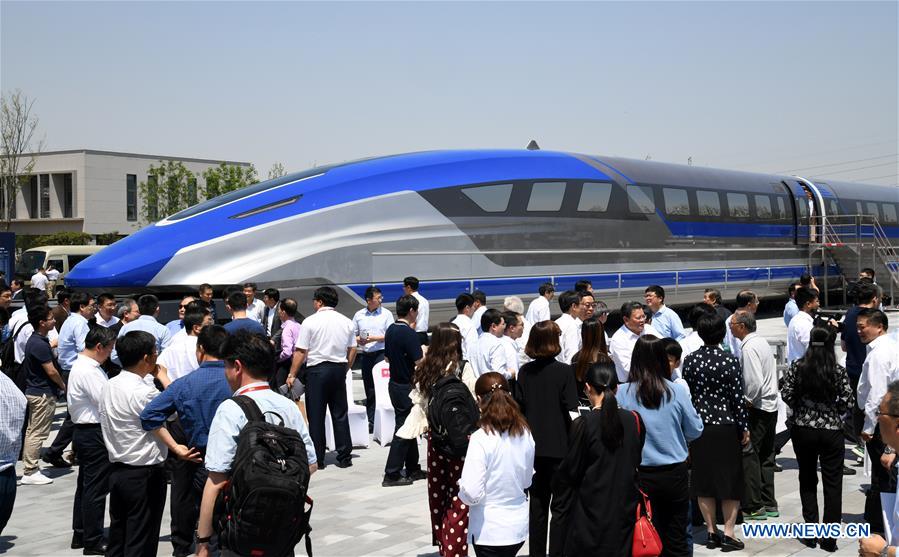Maglev trains set to make their mark
 0 Comment(s)
0 Comment(s) Print
Print E-mail China Daily, November 13, 2019
E-mail China Daily, November 13, 2019

Plans for high-speed maglev lines with trains traveling at speeds of 600 kph or more are taking shape in more Chinese cities in a bid to boost regional integration and economic growth, transportation analysts said.
Chengdu, capital of Southwest China's Sichuan province, is considering a high-speed maglev line with a top speed of 800 kph to neighboring Chongqing, according to the city's latest development plan.
The lines, which use magnets to float a swiftly moving train above its tracks, are expected to cut travel time between the two cities to half an hour, down from one hour and 13 minutes on the current high-speed train service, which can hit speeds of 350 kph.
Wuhan, capital of Central China's Hubei province, is also eyeing a maglev train, with China Railway Siyuan Survey and Design Group, a subsidiary of China Railway Construction Corp that is based in the city, to begin construction of the line next year, the Wuhan Evening News reported.
A team led by the China Academy of Engineering is also conducting a feasibility study on a high-speed maglev line in the Guangdong-Hong Kong-Macao Greater Bay Area, with a designed maximum speed of 600 kph, He Huawu, vice-president of the academy, said in July at the 2019 World Transport Convention in Beijing.
Jia Limin, a professor at Beijing Jiaotong University and head of China's high-speed rail innovation program, said the high speeds of the maglev lines were close to airplane cruising speeds. Without wheels, the trains can achieve higher speeds by running in a vacuum tube to lower air resistance.
"Maglev is the future of ultrafast trains since it's fast, safe, reliable and low maintenance," Jia said. "It can fill the service gap between the high-speed rail network and aviation, which will further boost the flow of talent in neighboring provinces and even nationwide, and thus propel regional economic growth and prosperity."
China has made consistent strides in developing maglev technologies and has achieved major breakthroughs in research and engineering practices.
In May, Chinese manufacturer CRRC Qingdao Sifang unveiled a prototype maglev train with a designed top speed of 600 kph. The engineering prototype was reported to be likely to roll off the production line next year, before undergoing comprehensive testing in 2021 to prepare for commercial manufacturing.
In 2006, the Shanghai Maglev Train, which uses German technology, was put into use on a 30-km track between downtown Shanghai and the city's Pudong airport. It normally operates at a maximum speed of 430 kph.
"China started operating its first maglev railway more than a decade ago, but has since concentrated on conventional high-speed rail because it was hindered by many critical technologies at that time," said Sun Zhang, a railway specialist and professor at Shanghai's Tongji University.
"But we have been learning advanced technologies from foreign countries, digesting and absorbing; and eventually developed our own innovations over the past years, finally laying a technological basis for an engineering prototype."
A set of technical standards for maglev railways, released by the National Railway Administration, will be implemented on a trial basis from Jan 1.
The standards, based on opinions gathered from government agencies and scientific research institutes, cover basic technical requirements, including track gauges, and clarify the main specifications for maglev trains.






Go to Forum >>0 Comment(s)